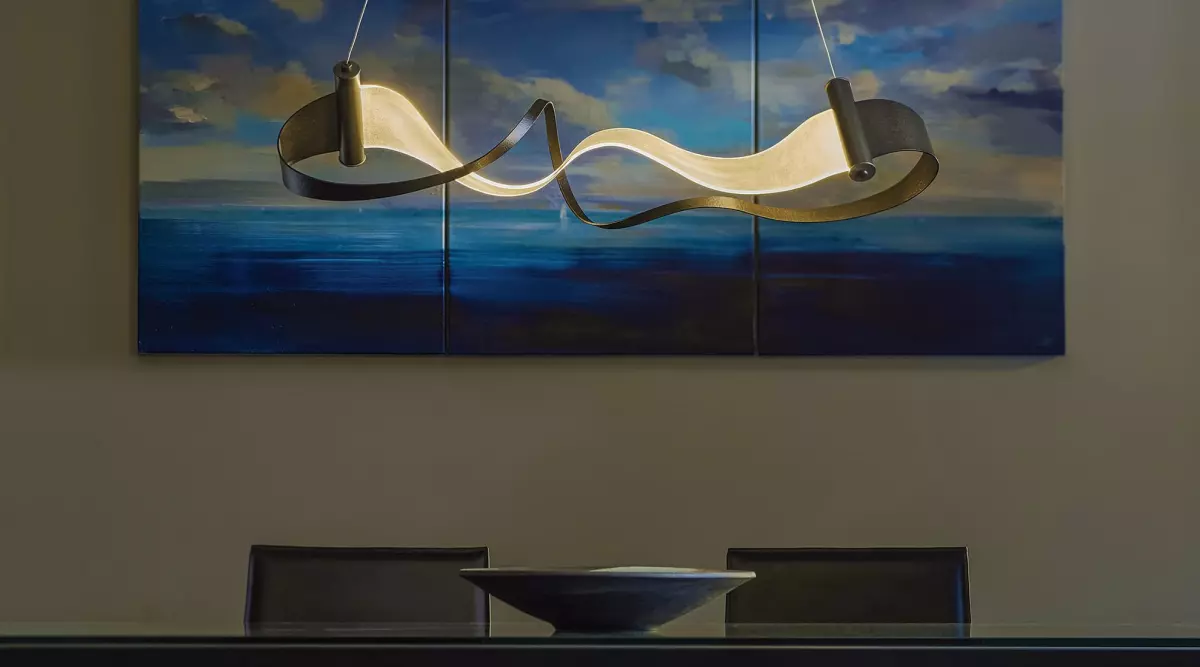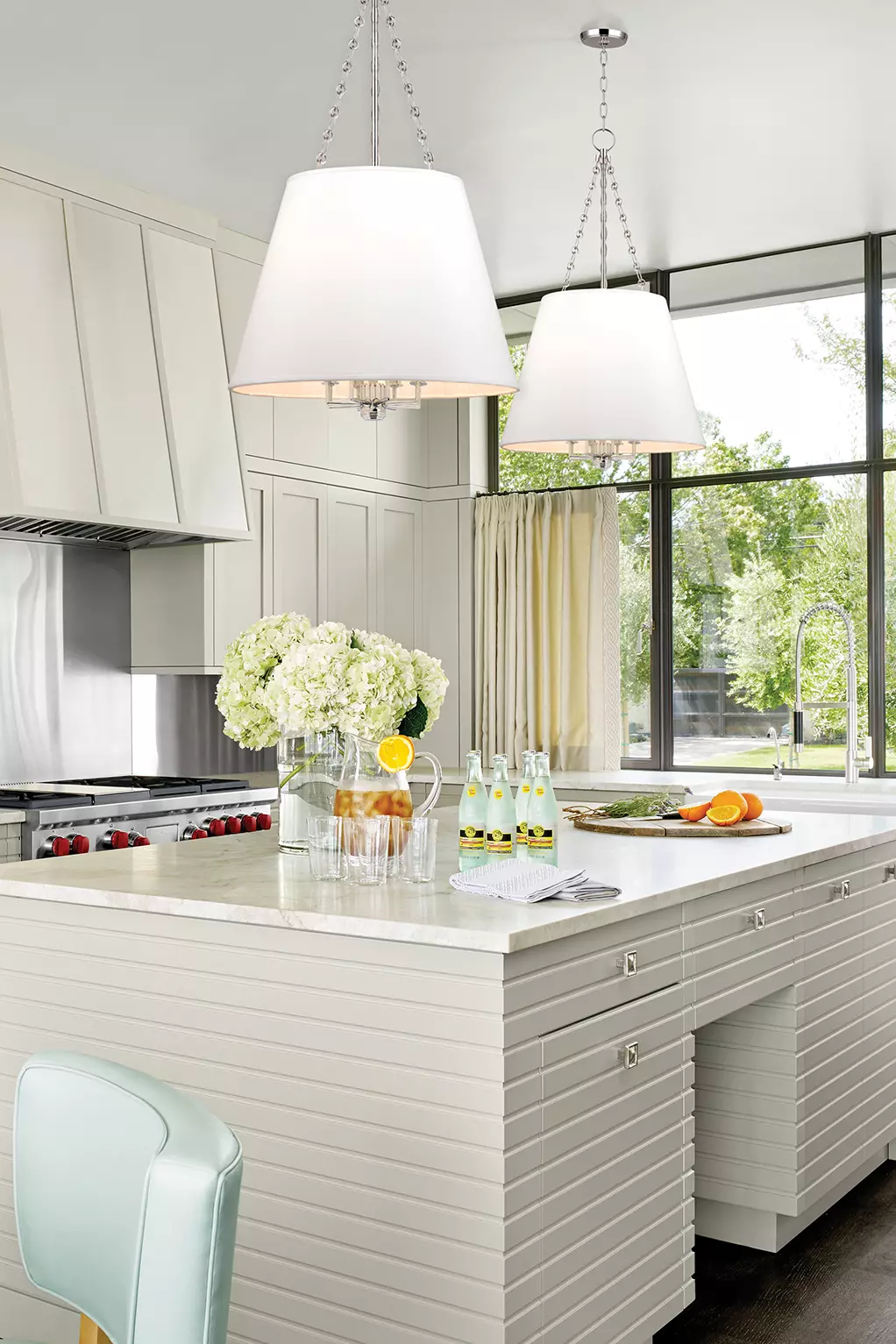Choosing the perfect-sized light fixture can make or break the design of a space. You don't want it to be too big and overpowering, but you also don't want it to feel oddly small. Finding the right balance is key. In this article, we will guide you on determining the ideal size of a ceiling light and provide insights on scale, clearance, and spacing.
Scale: Diameter and Height of a Light Fixture
Before considering furniture, it's important to understand the basic parameters when choosing a light fixture for open rooms like living rooms and bedrooms. Start by noting the room's height, length, and width.
 Zephyr LED Linear Suspension by Hubbardton Forge
Zephyr LED Linear Suspension by Hubbardton Forge
Diameter
To determine the ideal diameter of a light fixture for your space:
- Measure the length and width of the room in feet (e.g., 10 feet by 12 feet).
- Add the two lengths together, then swap that value in feet for inches (e.g., 10 + 12 = 22 feet becomes 22 inches).
- This is the ideal diameter for a light fixture in the room (e.g., 22 inches wide).
Height
To determine the ideal height of a light fixture for your space:
- Start with the height of the room (floor to ceiling) in feet (e.g., 10 feet high).
- Multiply the height by 2.5" to 3" per foot (e.g., 10 x 2.5" to 3" = 25-30 feet).
- Swap that value to inches (e.g., 25-30 feet becomes 25-30 inches).
- This is the ideal height for a light fixture in the room.
For example, a room may require a light fixture that is approximately 22 inches wide and 25-30 inches tall.
Clearance: How Low a Light Fixture Can Hang
The hanging length or height of a fixture is equally important, depending on the room or placement. The clearance needed varies for different spaces.
In living rooms, bedrooms, or open foyers, where people might be walking underneath a fixture:
- Keep 7 feet of clearance from the bottom of the fixture to the floor.
- If your ceiling is 8 feet high, consider a low-profile flushmount for proper clearance and general lighting requirements.
- In an open foyer or hallway, hang chandeliers or pendants with the bottom at least 6" higher than the door.
In bathrooms:
- Above a bathtub, keep 8 feet between the top of the tub and the bottom of the fixture. If the ceiling height doesn't allow for this, consider a smaller chandelier or hang the fixture at least 3 feet away from directly over the tub, keeping the 7-foot clearance rule in mind.
Spacing: Where to Hang Lighting Fixtures
The spacing around and between lighting fixtures is essential, especially in relation to surrounding furniture like kitchen islands or dining room tables. Here are some guidelines for different scenarios:
Lighting Over a Dining Room Table
 PH 3 ½ - 3 Pendant by Poul Henningsen for Louis Poulsen
PH 3 ½ - 3 Pendant by Poul Henningsen for Louis Poulsen
Consider the shape and size of your table:
- Long rectangular or oval tables work well with linear suspension or multi-light pendant options.
- Square or round tables work best with a single pendant or chandelier placed in the middle.
- Multi-lights are also appealing; try a round canopy multi-light for a more dramatic effect. Alternatively, smaller pendants lined across the table can make a statement.
- Ensure the width or length of the fixture is at least 1 foot shorter than the total length of the table (or 6" smaller on each side).
- Hang the fixture between 28" and 36" from the bottom of the fixture to the tabletop.
Lighting Above a Kitchen Island
Pendants and mini pendants are commonly used for ambient and task lighting over kitchen islands or work surfaces.
 Burdett Pendant by Hudson Valley Lighting
Burdett Pendant by Hudson Valley Lighting
To determine the spacing between pendants:
- Measure the length of the island or table in inches.
- Determine the combined diameter of the pendants you want to use.
- Subtract the combined diameter from the length of the island.
- Add 1 to the number of pendants, then divide your subtracted value by the number of pendants.
- Aim for approximately 9" of space between each pendant.
For an even number of large pendants, each should measure about 1/3 the width of the surface below. If you prefer bigger pendants, use the same math as above, aiming for each pendant to be about 1/3 the width of the table or island below.
A good rule of thumb is to hang mini or medium-sized pendants 66"-72" off the floor to the bottom of each fixture.
Choosing the right size ceiling light is crucial for achieving a harmonious and balanced look in any space. By considering scale, clearance, and spacing, you can make an informed decision and enhance the overall design of your room.

















